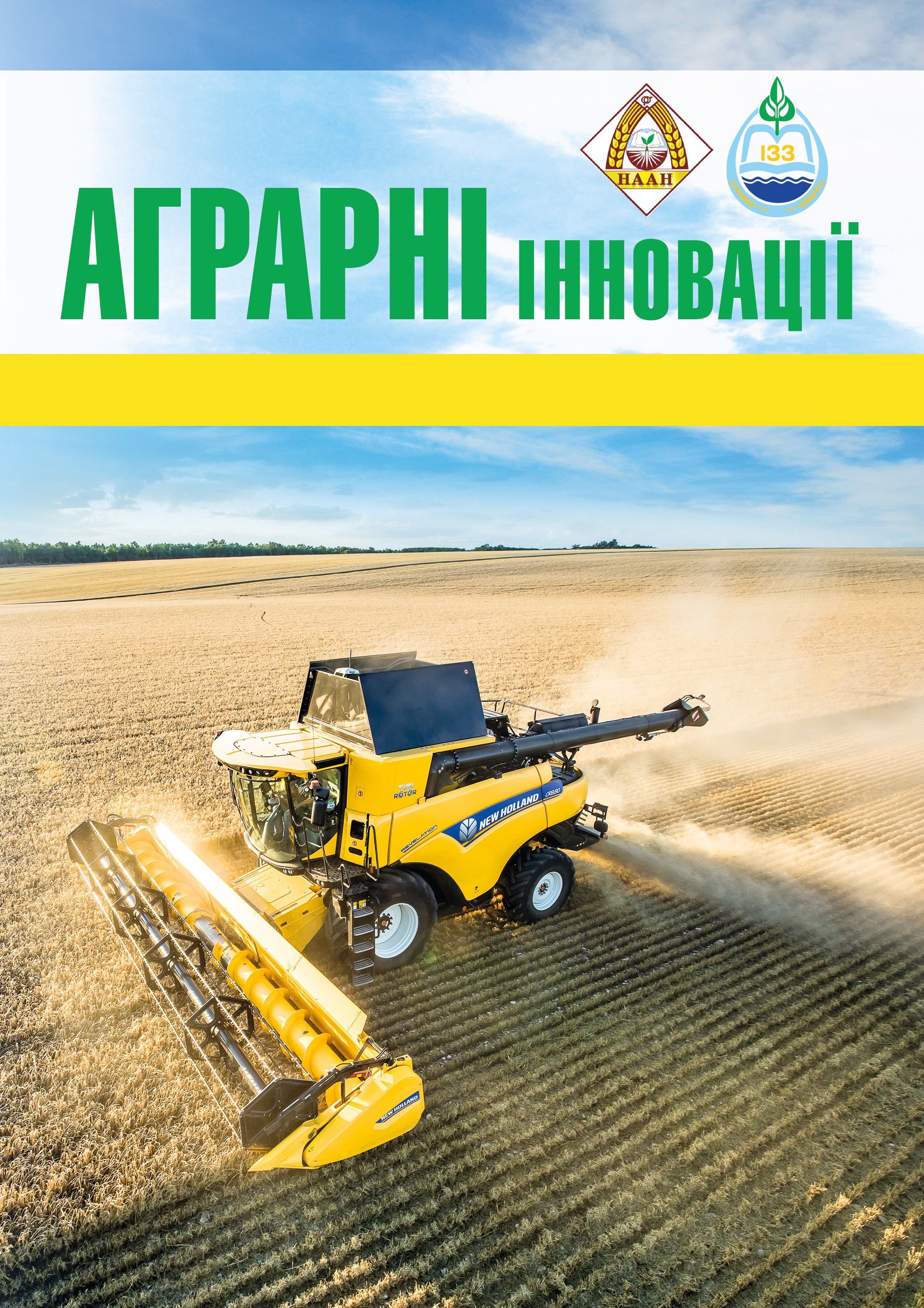The study of winter pea varieties by different seeding times in the conditions of the South of Ukraine
Abstract
Purpose. To determine the effect of sowing time on overwintering, the dynamics of growth and development of plants and the productivity of winter pea varieties HC Moroz and Enduro under extreme conditions of the South of Ukraine. Methods. For the study were taken 2 varieties of winter pea type HC Moroz, Enduro and 2 varieties of domestic breeding Svit and Darunok stepu. The size of the plot was 15 m2. The predecessor was winter wheat. To determine the characteristics that form the yield, 20 plants were selected manually from each plot. In the experiment were three replications. Phenological observations were carried out according to the methodology of the State Variety Testing. Sowing was carried out in the period 2017/18, 2018/19 in three terms (optimal ‒ 15.09, late ‒ 25.09, spring ‒ in the phase of physical maturity). Results. Autumn sowing of HC Moroz and Enduro varieties showed restraining growth processes in plant height, and the classic varieties, where their height at the optimal time of sowing was higher by 6‒7 cm and late by 2‒3 cm. When sowing in the spring, differences between varieties in height were not observed. It was found that varieties of winter peas in the optimal time of sowing have a higher level of node formation (8.5‒9 pcs.) then spring varieties (6.5‒7.0 pcs.). No differentiation was detected in late sowing time. Root length in all varieties (9‒11 cm) from 24.11 to 09.01 with the optimal sowing period has not changed or almost did not change (1‒2 cm). At a late sowing period in conditions of lower average temperatures, winter pea varieties (6‒7 cm) had a more accelerated development of the root system than spring varieties (4‒5 cm). In 2017/18 in January for 5 days the temperature reached -9, -10 ⁰С at night, -2, -4 ⁰С in the daytime. In late February and early March for 9 days the temperature during the day was -4, -6 ⁰C, at night -9, -14 ⁰C and snow cover reached 10 cm. The level of frost damage at the optimal time in the varieties of spring type had 40‒60 % (at late 30‒40 %), and varieties of winter type 15‒20 % (at late 0‒5 %). In the varieties HC Moroz and Enduro, when the main sprout was damaged for some reason (low temperature, pests, mechanical injury), more often than in other varieties, an additional one or two fullfledged lateral branches are formed. Under the conditions of a dry spring for two years was found that, in the varieties HC Moroz and Enduro at different seeding time in early and mid-november and early march the increase in yield occurs due to an increase in the number of beans and seeds per plant. In spring varieties of peas there is a higher weight of 1000 seeds. In 2018, at different germination dates in the varieties of HC Moroz and Enduro yields were at the same level and higher than in spring varieties. And in 2019, when seeds germinated at the end of February at the beginning of March, the Enduro variety (2.28 t / ha) had a significant advantage over the varieties of HC Moroz (1.75 t / ha), Svit (1.7 t / ha) and Darunok stepu (1.63 t / ha). Varieties of winter pea when sown in spring time (in the phase of full soil ripeness) have approximately the same level of yield as in spring-type varieties. Conclusions. The technology of growing pea during winter sowing contributes to higher plant productivity due to better use of winterspring moisture and avoiding high air temperatures in early summer. Varieties of HC Moroz and Enduro are fully suitable for sowing in autumn and winter time, as they are distinguished by a sufficient level of productivity, winter hardiness and drought resistance in extreme conditions of the South of Ukraine.
References
2. McPhee K. Dry pea production and breeding: a minireview. J. Food Agric. Environt. 2003. v. 1. N 1. P. 64–69.
3. Wellensick S.J. Genetic monography on Pisum. Biblhia genet. 1925. N 2. P. 343–476.
4. Stoddard F.L., Balko C., Erskine W., Khan H.R., Link W., Sarker A. Screening techniques and sources of resistance to abiotic stresses in cool season food legumes. Euphytica. 2006. v. 147, N 1–2. P. 167–186.
5. Urbatzka P., Grag R., Haase T., Schiiler C., Trautz D., Hefg J. Grain yield and quality characteristics of different genotypes of winter pea in comparison to spring pea for organic farming in pure and mixed stands. Org. Agric. 2011. v. 1, N 4. P. 187–202.
6. Zhang X., Wan S., Hao J., Hu J., Yang T., Zong X. Large – scale evaluation of pea (Pisum sativum L.) germplasm for cold tolerance in the field during winter in Qingdao. The crop j. 2016. v. 4, N 5. P. 377–383.
7. Silim S.N., Hebblethwaite P.D., Heath M.C. Comparison of the effect of autumn and spring sowing date on growth and yield of combining peas (Pisum sativum L.). J. Agri. Sci. 1985. v. 104, N 1. P. 35–46.
8. Mikič A., Mihailovič V., Čupine B., Dordevič V., Milič D., Due G. Achievements in breeding autumn-sown annual legumes for temperate region with emphasis on the continental Balkans. Euphytica. 2011. v. 180. N 1. P. 57–67. DOI: 10.1007/s10681–011–0453–7.
9. Ceyhan E. Genetic analysis of cold hardness in peas (Pisum sativum L.). J. Plant Sci. 2006. v.1. N 2. P. 138–143. DOI: 10.3923/ps. 2006.138.143.
10. Ідентифікація ознак зернобобових культур (горох, соя): навчальний посібник / В. В. Кириченко та ін. Харків, Інститут рослинництва ім. В.Я. Юр’єва УААН. 2009. 172 с.






